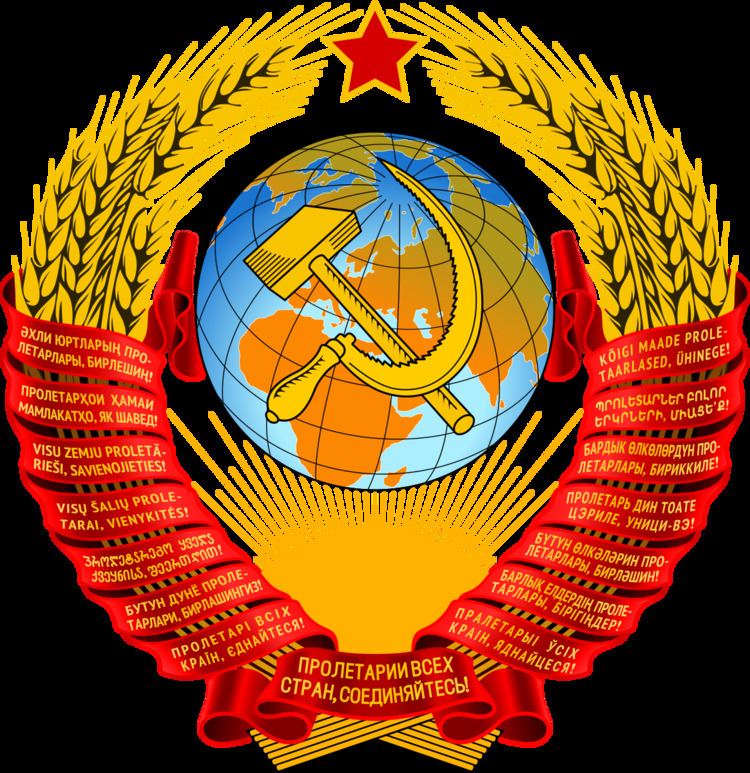Formation 30 December 1922 Final holder Ivan Silayev | First holder Vladimir Lenin Abolished 25 December 1991 | |
 | ||
Residence Grand Kremlin Palace, Moscow Precursor Chairman of the Council of People's Commissars of the RSFSR | ||
The office of Premier of the Soviet Union (Russian: Глава Правительства СССР) was synonymous with head of government of the Union of Soviet Socialist Republics (USSR). Twelve individuals became premier over the time span of the office. Two of the twelve premiers died in office of natural causes (Vladimir Lenin and Joseph Stalin), three resigned (Alexei Kosygin, Nikolai Tikhonov and Ivan Silayev), and three held the offices of party leader and premier simultaneously (Lenin, Stalin and Nikita Khrushchev). The first premier was Lenin, who was inaugurated in 1922 after the Treaty on the Creation of the USSR. Ivan Silayev spent the shortest time in office at 126 days in 1991. At over fourteen years, Kosygin spent the longest time in office, and became the only premier to head more than two government cabinets; he died shortly after his resignation in 1980.
The Council of People's Commissars (Sovnarkom) was established on 8 November 1917 by the Russian Soviet Federative Socialist Republic (RSFSR) Government. Article 38 of the 1924 Soviet Constitution stated that the Council's powers, functions and duties were given to it by the Central Executive Committee (CEC) which supervised the Council's work and legislative acts. The Council of People's Commissars published decrees and decisions that were binding throughout the Soviet Union. In 1946, the Council of People's Commissars was transformed into the Council of Ministers (Sovmin) at both all-Union and Union Republic level.
In 1964, after Nikita Khrushchev's ouster, a plenum of the Central Committee (CC) forbade any single individual to hold the two most powerful posts of the country (the office of the General Secretary and the premier), and Kosygin was in charge of economic administration in his role as Chairman of the Council of Ministers. However Kosygin's position was weakened when he proposed an economic reform in 1965. Under the 1977 Soviet Constitution, the Chairman of the Council of Ministers was the head of government of the USSR. The premier was the chief of the executive branch and head of the union government as a whole, the premiership was the highest governmental office in the Soviet Union by influence and recognition until the establishment of the Presidency in 1990. The premier was responsible and accountable to the Supreme Soviet, and in the period between sessions of the Supreme Soviet, accountable to the Presidium of the Supreme Soviet. The premier was tasked with resolving all state administrative duties within the jurisdiction of the USSR to the degree that it did not come under the competence of the Supreme Soviet or the Presidium. The premier managed the national economy, formulated the five-year plans and ensured socio-cultural development.
When Nikolai Ryzhkov was replaced as premier by Valentin Pavlov, the Council of Ministers was dissolved and replaced by the Cabinet of Ministers, while the chairmanship was replaced by the office of Prime Minister of the Soviet Union. After the failed August Coup of 1991, and the revelation that the majority of the cabinet members supported the coup, the Cabinet of Ministers was dissolved and replaced by the Committee on the Operational Management of the Soviet economy in 1991. The Operational Management Committee was renamed the Inter-Republican Economic Committee, and was later replaced by the Interstate Economic Committee (IEC), the IEC was also officially known as the Economic Community.
